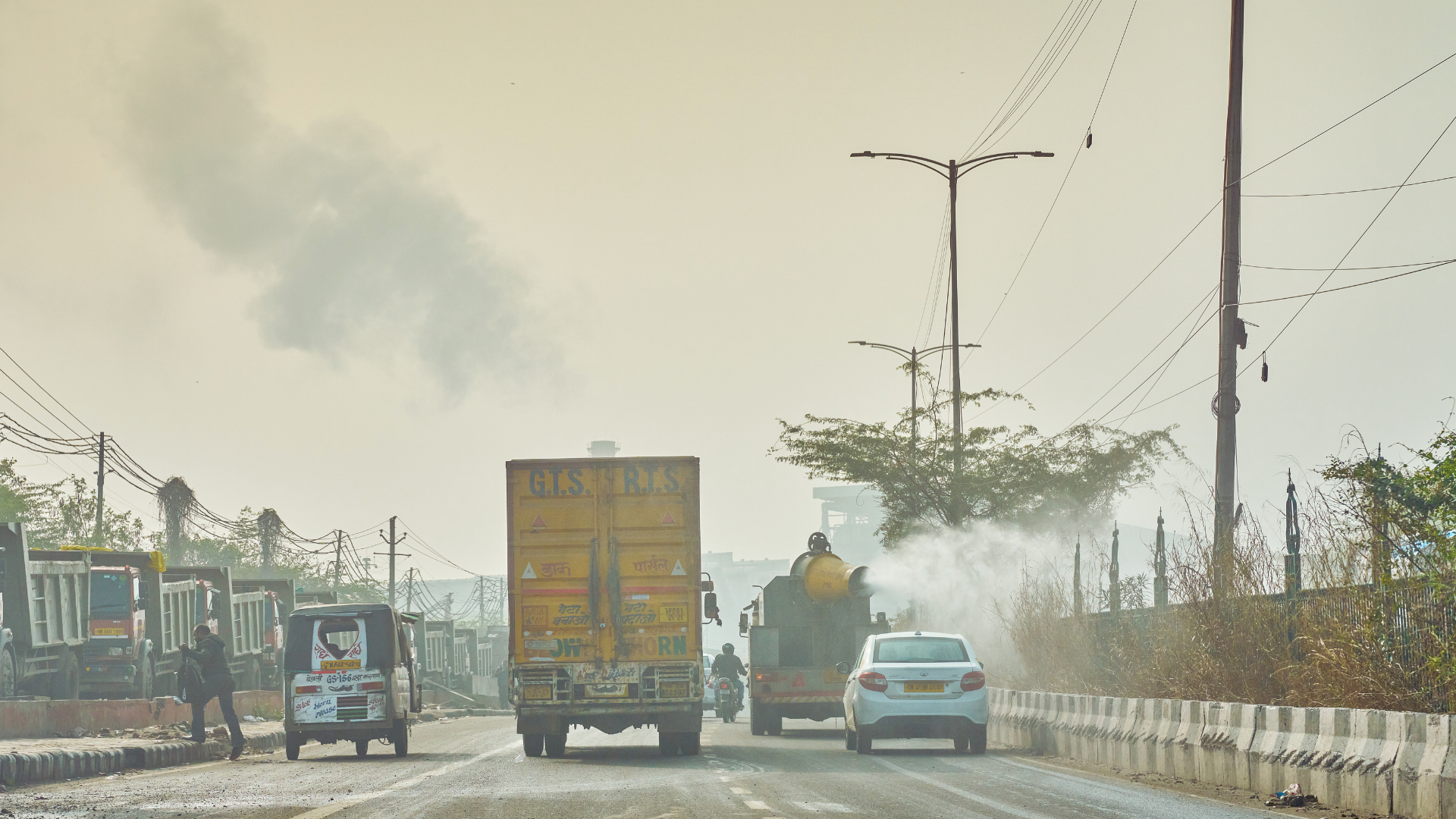
Air pollution poses significant health risks, affecting millions worldwide. Understanding the primary sources of air pollution—such as vehicle emissions, industrial discharges, and household activities—allows individuals and communities to take actionable steps to reduce their impact. By recognising these contributors, one can better appreciate the importance of cleaner air for public health.
As urbanisation and industrialisation continue to rise, the consequences of poor air quality become increasingly evident. Respiratory illnesses, cardiovascular diseases, and other serious health problems often stem from exposure to polluted air. Strategies to combat air pollution, including promoting public transport and utilising renewable energy sources, are crucial for improving air quality and protecting health.
Everyone plays a role in combating air pollution. By adopting simple lifestyle changes, such as reducing energy consumption and increasing green spaces, communities can actively contribute to cleaner air. Understanding where air pollution comes from is the first step towards making informed decisions that ultimately lead to a healthier environment.
Sources of Air Pollution
Air pollution originates from a variety of sources, each contributing to different harmful pollutants. Understanding these sources helps in identifying effective strategies for mitigation. The primary contributors include industrial emissions, vehicle exhaust, agricultural practices, and natural occurrences.
Industrial Emissions
Industries are a significant source of air pollution, releasing a variety of harmful pollutants during manufacturing processes. These emissions often include sulphur dioxide, nitrogen oxides, and volatile organic compounds.
Power plants, particularly those burning fossil fuels, are notable contributors, emitting large amounts of CO2 and various particulates. Factories involved in chemical production also release harmful substances, affecting air quality in surrounding areas. Regulations aimed at reducing industrial emissions have been implemented, yet enforcement varies by region.
Employing cleaner technologies and enhancing emission controls can mitigate the impact of these emissions.
Vehicle Exhaust
Vehicle exhaust is a major contributor to urban air pollution. Cars, trucks, and buses emit nitrogen oxides, carbon monoxide, and particulate matter as by-products of combustion.
With a growing number of vehicles on the road, especially in urban areas, emissions have significantly increased. Ozone formation occurs due to chemical reactions between nitrogen oxides and volatile organic compounds in sunlight.
Promoting public transport, encouraging electric vehicles, and enforcing strict emission standards can reduce vehicle exhaust pollution. Regular vehicle maintenance also plays a key role in minimising emissions from personal and commercial vehicles.
Agricultural Activities
Agricultural activities contribute to air pollution through practices such as fertiliser application and livestock management. The use of nitrogen-based fertilisers leads to the release of ammonia, which can combine with other pollutants to form fine particulate matter.
Livestock production generates methane, a potent greenhouse gas with a significantly higher warming potential than CO2. Pesticides and herbicides applied in farming can also become airborne, affecting air quality and human health.
Sustainable farming practices, including responsible fertiliser use and improved animal waste management, can help reduce agricultural air pollution.
Natural Sources
Natural sources of air pollution include wildfires, volcanic eruptions, and dust storms. These events release substantial amounts of particulate matter and gases, including sulphur dioxide.
Wildfires, often exacerbated by climate change, produce smoke that can travel long distances, impacting air quality across regions. Volcanic eruptions can release ash and gases that may have both local and global effects.
While natural sources cannot be entirely controlled, understanding their patterns can help predict and mitigate their impact on air quality during such events. Strategies for monitoring and preparing for natural emissions are essential for public health and safety.
Health Implications of Air Pollution
Air pollution poses significant health risks, affecting various bodily systems and particularly harming vulnerable populations. Poor air quality is linked to numerous health conditions that can severely impact the quality of life.
Respiratory Conditions
Air pollution is a major contributor to respiratory problems such as asthma and chronic obstructive pulmonary disease (COPD). Fine particulate matter (PM2.5) and other pollutants can irritate the airways, leading to inflammation and reduced lung function.
Individuals exposed to high levels of air pollution often experience worsened symptoms during pollution peaks. Studies indicate that children and the elderly are particularly vulnerable. Research shows a correlation between poor air quality and increased emergency room visits for respiratory issues.
Regular exposure may result in long-term effects, including decreased lung development in children and accelerated lung function decline in adults. Effective measures for minimising exposure include staying indoors during high-pollution days and using air purifiers.
Cardiac Problems
Air pollution has been linked to cardiovascular diseases, including heart attacks and strokes. Pollutants can enter the bloodstream and exacerbate existing health conditions, such as hypertension and atherosclerosis.
Evidence indicates that long-term exposure to air pollution increases the risk of heart disease significantly. For instance, findings suggest that individuals living near busy roads face heightened risks due to concentrated traffic-related emissions.
Maintaining air quality is essential for heart health. Recommendations include encouraging a shift to public transport, promoting electric vehicles, and implementing stricter emissions regulations.
Impact on Vulnerable Groups
Certain populations, such as children, the elderly, and those with pre-existing health conditions, face higher risks from air pollution. Children’s developing lungs and immune systems make them particularly sensitive to pollutants.
Elderly individuals often have weakened health, making them more susceptible to air quality issues. Those with pre-existing respiratory or cardiac conditions also experience exacerbated symptoms due to poor air quality, leading to increased healthcare needs.
Protecting these vulnerable groups requires targeted public health policies. Community awareness campaigns can help inform people about pollution levels and encourage protective behaviours, particularly in high-risk areas. Ensuring that vulnerable populations have access to clean air is vital for their health and well-being.
Strategies for Mitigation
Mitigating air pollution involves a combination of effective policies, innovative technologies, and increased public awareness. Each strategy plays a critical role in improving air quality and achieving significant emission reductions.
Policy and Regulations
Government policies and regulations serve as crucial frameworks for reducing air pollution. Strong regulations can include stringent emission standards for industrial facilities, power plants, and vehicles.
Legislation such as the Clean Air Act sets limits on pollutants and enforces compliance through penalties. These policies encourage industries to adopt cleaner technologies and practices.
Governments may also implement incentives for renewable energy sources, like solar and wind. Establishing low-emission zones in urban areas can further decrease traffic-related pollution.
In addition, enhanced monitoring and reporting of air quality data promote accountability, guiding future policy decisions.
Technological Innovations
Technological advancements play an essential role in air pollution mitigation. Innovations like electric vehicles (EVs) significantly decrease emissions from the transportation sector.
Advanced air filtration systems can capture and reduce pollutants from industrial operations. The adoption of carbon capture and storage (CCS) technology allows industries to limit their greenhouse gas emissions substantially.
Smart technologies, such as sensors and IoT devices, enable real-time air quality monitoring to inform communities about pollution levels.
Additionally, promoting green building designs that utilise energy-efficient materials can lead to long-term reductions in air pollutants, improving overall air quality.
Public Awareness and Behavioural Change
Public awareness campaigns are vital for driving behavioural changes that reduce air pollution. Educational initiatives highlight the impacts of air pollution on health and the environment.
Encouraging the use of public transport, cycling, or walking can significantly decrease vehicle emissions. Communities can organise car-free days or promote local initiatives that foster cleaner air.
Social media platforms play a powerful role in spreading information and engaging the public in pollution reduction activities.
Collaboration between local governments, schools, and civic groups can facilitate community-based solutions, enhancing air quality and public health.
